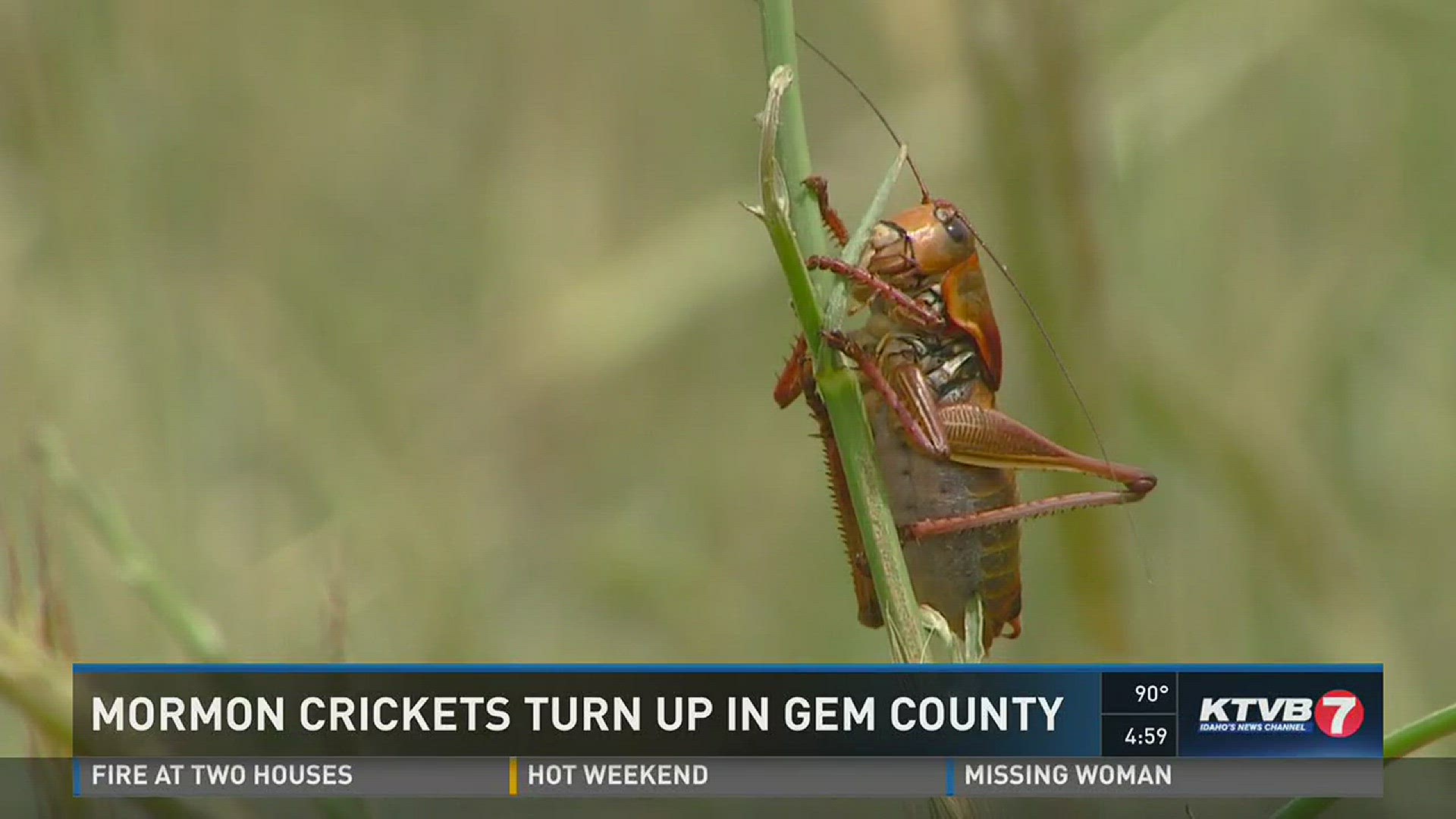It's something ranchers and farmers in Gem County haven't seen for about a decade: Mormon crickets.
However, this year they're back. The Idaho State Department of Agriculture has already started working with farmers in the area to put down abatement to prevent infestations.
For some Emmett ranchers, like Korth Elliott, this is a first.
"I've never seen it and I've lived here my whole life," Elliott said.
A part of Elliott's 126 acres in Emmett started to get infested with the cricket.
"I was kinda curious about them and that. The Mormon crickets and eating everything in the world," Elliott said.
According to the Idaho State Department of Agriculture, that's exactly what the crickets do: they'll eat grasses, shrubs, sagebrush and crops.
"They can have a big impact on especially crops and rangeland. So you'll see them, they really like to feed on both of those things, and they'll really wipe out agricultural crops and rangeland if given an opportunity," said Lloyd Knight with the Idaho State Department of Agriculture.
So as you can imagine, Elliott was doing anything he could to get them stopped.
"Hopefully try and get a line of barrier, defense there to try and stop them," Elliott said.
Elliott, with the help of the Department of Agriculture, was able to put down some abatement.
"The state provided some bait material that we put out and that kinda helps kill them," Elliott said.
Many times the crickets will infest a centralized area.
"They're usually fairly localized. So you'll hear and see infestations in a very localized area, usually around rangeland is where we'll see them," Knight said.
Locations of infestations can change from year-to-year depending on a variety of variables.
"Climate, available food, what kind of spring you have, what kind of winter you have. Highly variable," Knight said. "This is something that happens every summer. We get them somewhere in the state. So it's that time of year again."
Ranchers and farmers can receive help from the Department of Agriculture if Mormon crickets start infesting their crops. Help can be can be found here.

